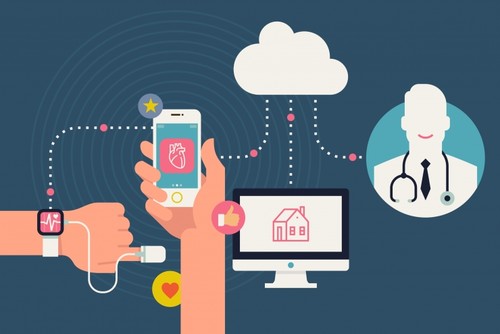44% increase in 2016: Is the spring of remote monitoring medical equipment coming?
In 2016, the remote patient monitoring market experienced rapid development, with 7.1 million patients participating in digital health projects of different companies, among which the interconnected medical devices are the core.
Berg Insight, a Swedish market research company, specializes in the vertical market of the Internet of Things, and they have made in-depth reports on the field of remote patient monitoring in 2016.
In 2016, the growth rate of remote patient monitoring was 44%. Although their reports do not include a variety of connected devices for personal health tracking, the researchers predict that the ongoing health care revolution will gradually play a huge role.
In the next four years, the number of patients undergoing remote monitoring will reach 50.2 million, of which 25.2 million will come from home medical monitoring equipment, and the rest will be personal equipment users.

The researchers wrote
For telemedicine , the patient's own mobile device has become an important phenomenon as a medical center. By 2021, patients are more inclined to choose personal connection devices, and the number of such patients will reach 22.9 million.
Dominant position - sleep technology
As this trend becomes more apparent, more connections in the medical device and medical sectors will lead to new value propositions and services. The Berg report said that in 2016, sleep technology was the fastest growing market segment, replacing the long-standing dominant implanted heart rhythm management field (mainly led by Medtronic, Biotronik and St. Jude Medical), in 2016, both Vertical areas together account for 80% of connected home medical equipment systems. Next is the telemedicine sector, with 500,000 connected devices.
In 2016, the number of patients implementing remote sleep monitoring treatment increased by 70%, mainly driven by supplier ResMed, and connecting health care has become the core of its strategy.
Fastest growth - blood glucose monitoring, air monitoring and connecting drugs
Looking ahead, Berg predicts that over the next five years, blood glucose monitoring, air monitoring and connected drugs will be the three fastest growing market segments. So who are the leaders in these fields?
Berg points out AstraZeneca, Dexcom, Merck, Novartis, Propeller Health, Proteus Digital Health, Roche, Sanofi, Voluntis and WellDoc.
Cellular connectivity has become the standard of practice for communication technologies connected in the field of home healthcare monitoring equipment, with approximately 4.9 million such devices integrating cellular connectivity (in 2015, there were 3 million such devices).
Quick Release Pin
Quick Release Pins have a wide range of uses in fastening , locating , and alignment applications. The pins will not release until the button on the handle is depressed. Once the button is depressed, the balls retract into the shank allowing the pin to be inserted or removed into or out of a hole. The shanks are made from 304 or 17-4PH stainless steel. The handles for the pins listed below are made from aluminum alloy and anodized black. Stainless steel handles are also available .The pins are supplied with stainless steel split ring for attaching a cable assembly .Pins in other grip lengths are available as special orders .
The detent pins are designed to use in temporary quick disconnect operations. Used as a convenient way to adjust or remove accessories on equipment. The pin has a ball bearing on one end with a steel spring works that depresses and springs out to lock the pin into place.Rigid quality control procedures ensure a consistent fastener you can count on. Standard sizes are made from low carbon steel,zinc plated, or stainless steel.

Quick Release Pins,Ball Lock Pins,T Handle Quick Release Pin,Stainless Steel Ball Lock Pin
Ningbo Yokelink Machinery Co.,Limited , https://www.yokelink.com
